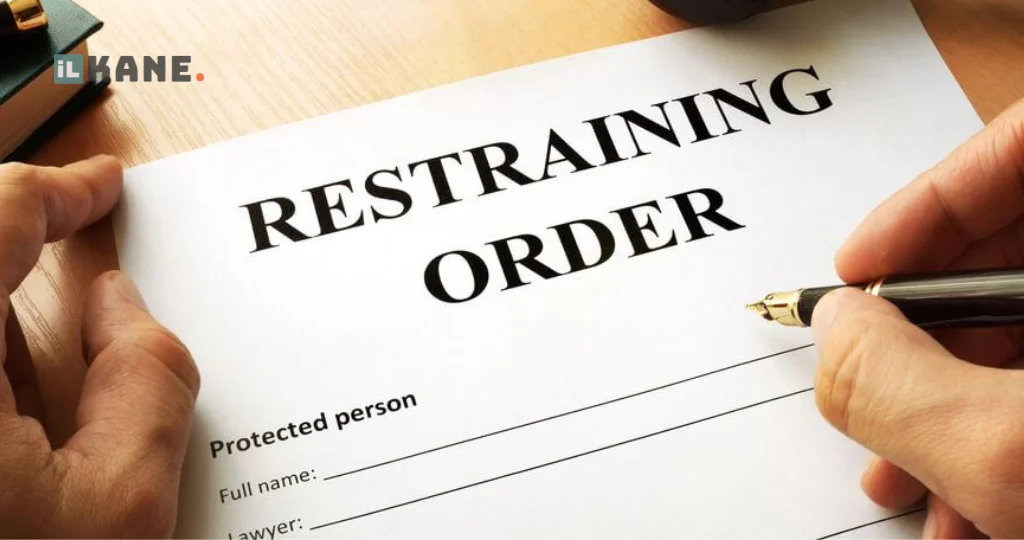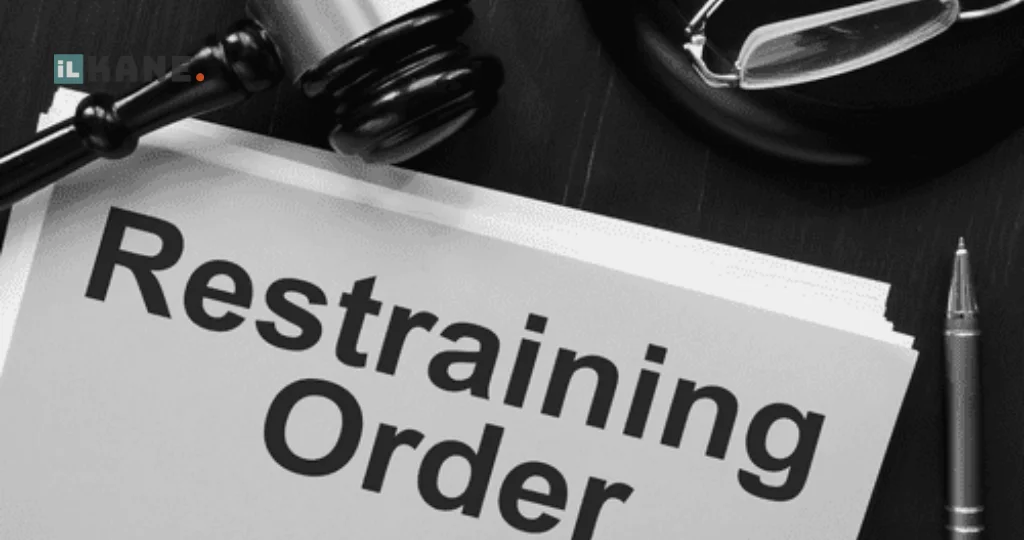Understanding the Duration of Restraining Orders Really Stay: How Long Do They Restraining Orders Really Stay? Restraining orders are legal measures designed to protect individuals from potential harm or harassment. If you find yourself in a situation where you need to obtain or defend against a restraining order, it’s important to understand the implications it may have on your record. In this article, we’ll delve into the topic and answer the question on everyone’s mind: how long do restraining orders really stay on your record?
What is a Restraining Order?
Before we dive into the duration, let’s briefly discuss what a restraining order entails. A restraining order, also known as a protective order or an order of protection, is a court-issued document that prohibits an individual from contacting or approaching another person. It is typically utilized to protect victims of abuse, stalking, or harassment.
Duration of Restraining Orders Really Stay:
Now, let’s address the question that has brought you here: how long do restraining orders really stay on your record? The answer is not straightforward, as it varies depending on the jurisdiction and the specific circumstances surrounding the order.
Temporary Restraining Orders (TRO):
In many cases, a restraining order starts as a temporary measure. A Temporary Restraining Order (TRO) is typically issued to provide immediate protection to the victim until a full hearing can take place. The duration of a TRO can range from a few days to a few weeks, depending on the court’s schedule and the severity of the situation.
Permanent Restraining Orders:
If the court determines that the victim’s safety requires ongoing protection, a permanent restraining order may be issued. Despite its name, a permanent restraining order is not truly permanent. Its duration can vary widely, ranging from several months to several years. Some jurisdictions may even grant permanent restraining orders really stay that have no specific expiration date.
Factors Influencing Duration:
Several factors can influence the duration of a restraining order on your record. These may include the severity of the offense, any prior history of violence or harassment, and the judge’s discretion. It’s important to consult with a legal professional in your jurisdiction to understand the specific laws and guidelines that apply to your situation.

Record Accessibility:
It’s essential to note that restraining orders really stay are typically matters of public record. This means that they can be accessed by potential employers, landlords, or anyone conducting a background check. However, the availability of this information and the extent to which it affects your record can vary between jurisdictions.
Expungement and Removal:
In some cases, individuals may be able to have a restraining order expunged or removed from their record. The process for expungement varies depending on the jurisdiction and the circumstances surrounding the order. It’s advisable to seek legal counsel to understand the feasibility and requirements for expungement in your specific case.
restraining orders really stay serve a vital purpose in protecting individuals from harm, but they can have lasting implications on one’s record. Understanding the duration of restraining orders really stay is crucial for those seeking protection or those looking to move forward after an order has been issued. Always consult with a legal professional to ensure you have accurate information and guidance tailored to your specific situation.
From Temporary to Permanent: Shedding Light on the Duration of Restraining Orders Really Stay Introduction:
Welcome to our blog, where we aim to provide you with valuable information on the duration of restraining orders really stay and how they can impact your record. If you’re searching for answers to the question, “How long do restraining orders really stay on your record?”, you’ve come to the right place. In this article, we will discuss the different types of restraining orders really stay, their durations, and the potential implications they may have on your life.
Understanding Restraining Orders:
A restraining order is a legal document issued by a court to protect individuals from harassment or potential harm. It is a powerful tool designed to ensure the safety and well-being of those who fear for their personal safety or that of their loved ones. While restraining orders really stay can offer immediate protection, it’s important to understand that they come with varying durations depending on the circumstances.
Temporary Restraining Orders:
Temporary restraining orders (TROs) are often the first step in obtaining legal protection. They are usually granted on an emergency basis, providing immediate relief to the victim. The duration of a TRO can vary from a few days to a few weeks, depending on the jurisdiction and the specifics of the case. It is essential to consult with a legal professional to understand the specific duration of a TRO in your area.
Permanent Restraining Orders:
Once a TRO is in place, it may be followed by a hearing to determine if a permanent restraining order should be issued. Permanent restraining orders, also known as final orders or injunctions, can last for an extended period, often several years. However, it’s important to note that the exact duration can vary based on the jurisdiction and the judge’s discretion. Consulting with a legal expert will provide you with the most accurate information regarding the duration of a permanent restraining order in your particular case.

Implications on Your Record:
Many individuals wonder about the long-term consequences of having a restraining order on their record. It’s crucial to understand that restraining orders really stay, whether temporary or permanent, can be a matter of public record. This means that they could potentially show up on background checks, impacting various aspects of your life, such as employment opportunities, housing applications, or even personal relationships.
However, it’s important to remember that not all background checks will include restraining order information, and laws can vary by jurisdiction. To gain a better understanding of how restraining orders really stay may affect your specific situation, seek legal advice and consult local legislation.
Seeking Legal Guidance:
If you find yourself involved in a restraining order case, it is strongly recommended to seek the assistance of an experienced attorney. They can guide you through the legal process, answer any questions you may have, and ensure that your rights are protected.
When it comes to the duration of restraining orders really stay, it is essential to recognize the differences between temporary and permanent orders. Temporary restraining orders really stay offer immediate protection, while permanent orders can last for several years. Understanding the potential implications of having a restraining order on your record is crucial, as it may impact various aspects of your life. Seeking professional legal guidance is always recommended to navigate through the complexities of restraining order cases effectively.
From Temporary to Permanent: Shedding Light on the Duration of Restraining Orders on Your Record Introduction:
Welcome to our blog, where we aim to provide you with valuable insights and answers to your burning questions. In today’s post, we’ll be exploring the topic of restraining orders really stay and how long they can stay on your record. If you’re curious about the duration of restraining orders and the impact they may have on your future, you’ve come to the right place. So, let’s dive in!
Understanding Restraining Orders:
Restraining orders are court-issued legal documents designed to protect individuals from potential harm or harassment. They are typically put in place to prevent contact between the person who requested the order (the petitioner) and the person against whom the order is filed (the respondent). While restraining orders really stay are usually temporary, their duration can vary depending on various factors.
What is the Duration of a Restraining Order’s Presence on Your Record?
Now, let’s address the question that brought you here: It’s important to note that the duration of restraining orders really stay can differ from one jurisdiction to another. However, we can provide you with some general information that might help.
Temporary Restraining Orders:
Temporary restraining orders really stay are typically issued for a short period, usually lasting anywhere from a few days to a few weeks. These orders are often granted ex parte, meaning the respondent may not be present during the initial hearing. Their purpose is to offer immediate protection to the petitioner until a full hearing can take place.
Permanent Restraining Orders:
Permanent restraining orders really stay, also known as final or long-term orders, are put in place after a full hearing where both parties have an opportunity to present their case. The duration of permanent restraining orders can vary significantly. In some cases, they may last for a specific number of years, while in others, they can be indefinite. The length of a permanent restraining order is usually determined by the severity of the situation, the judge’s discretion, and any applicable state laws.
The Impact on Your Record:
restraining orders really stay, whether temporary or permanent, may appear on your record depending on the jurisdiction and the type of background checks performed. This can include criminal background checks, employment screenings, or even future court proceedings. However, it’s important to consult with legal professionals to understand the specific laws in your area, as well as any potential options for expungement or removal.
Moving Forward:
If you find yourself in a situation involving a restraining order, it is crucial to seek the advice of an experienced attorney. They can guide you through the legal process, help you understand your rights and responsibilities, and provide the best course of action for your specific circumstances.
Conclusion
In conclusion, the duration of restraining orders on your record can vary depending on multiple factors, including the type of order, the jurisdiction, and the judge’s discretion. While temporary restraining orders are typically short-term, permanent orders can last for a specific period or even indefinitely. If you’re facing a restraining order, it’s essential to seek professional legal advice to navigate the complexities of the legal system and safeguard your future.
Remember, this blog post is meant to provide general information, and it’s always best to consult with legal professionals who can offer personalized guidance. We hope this article has shed some light on the duration of restraining orders on your record. Stay safe and informed!
